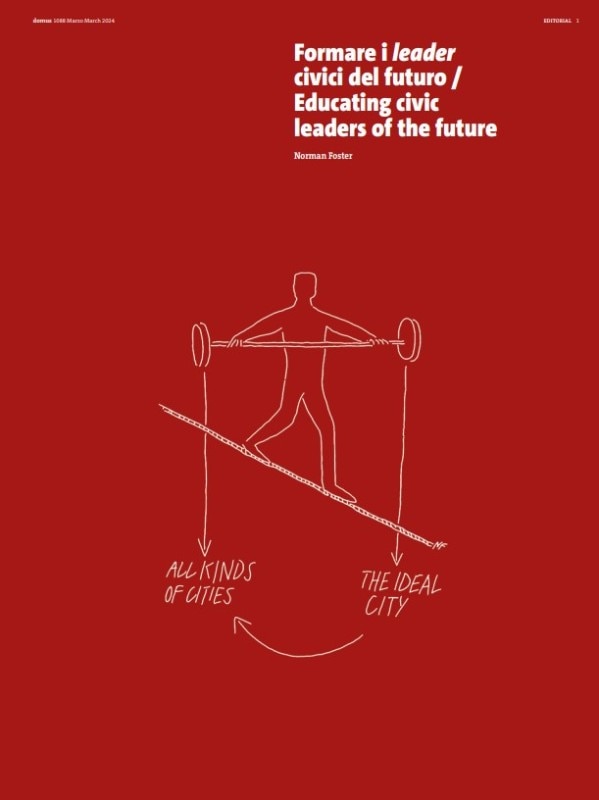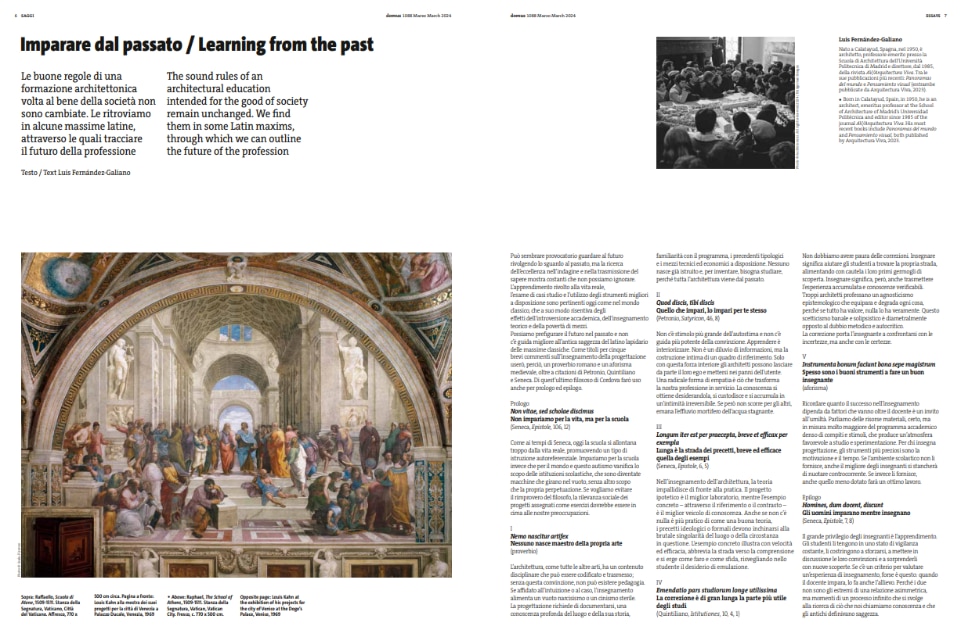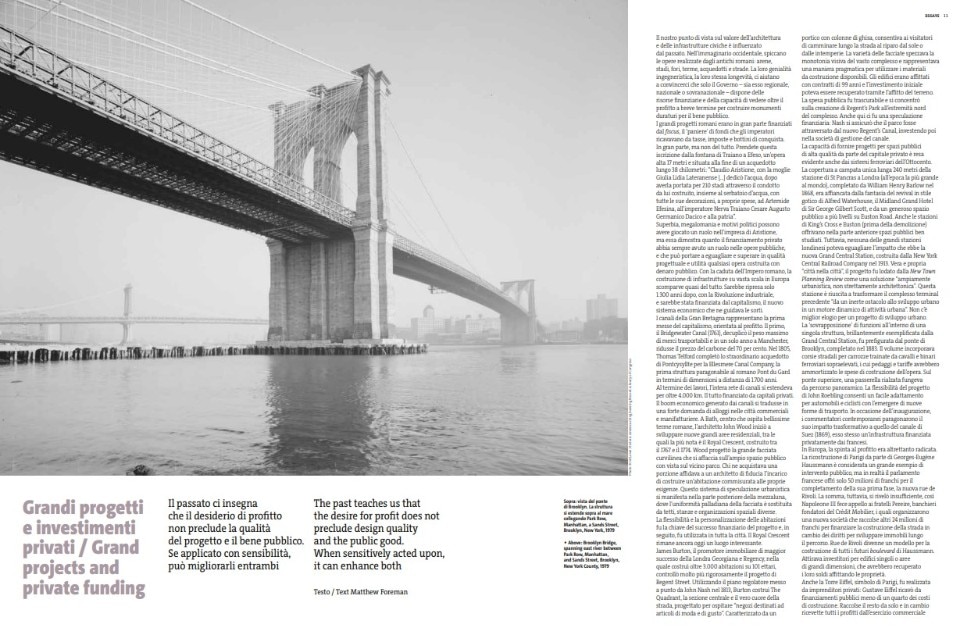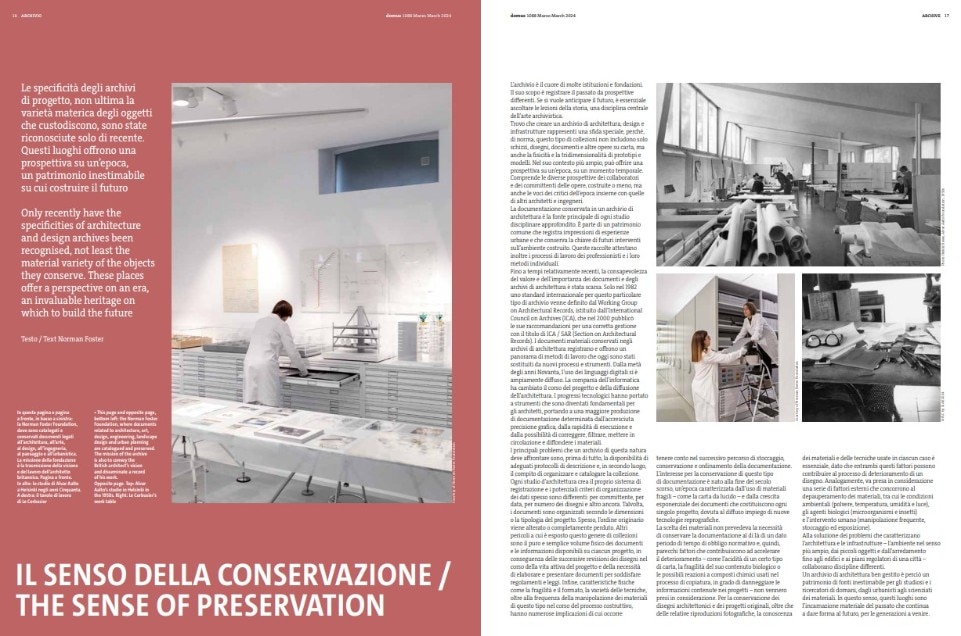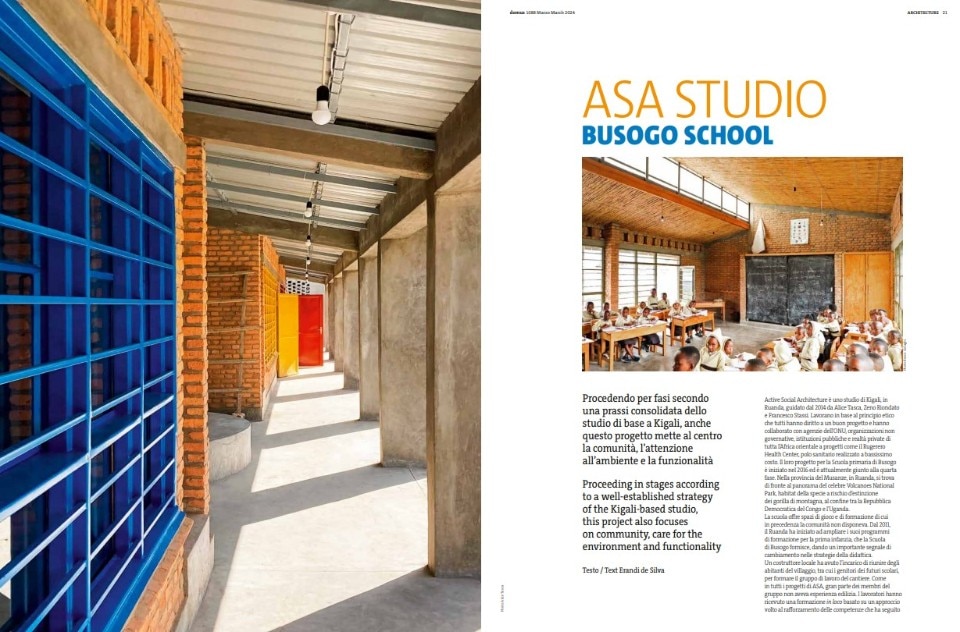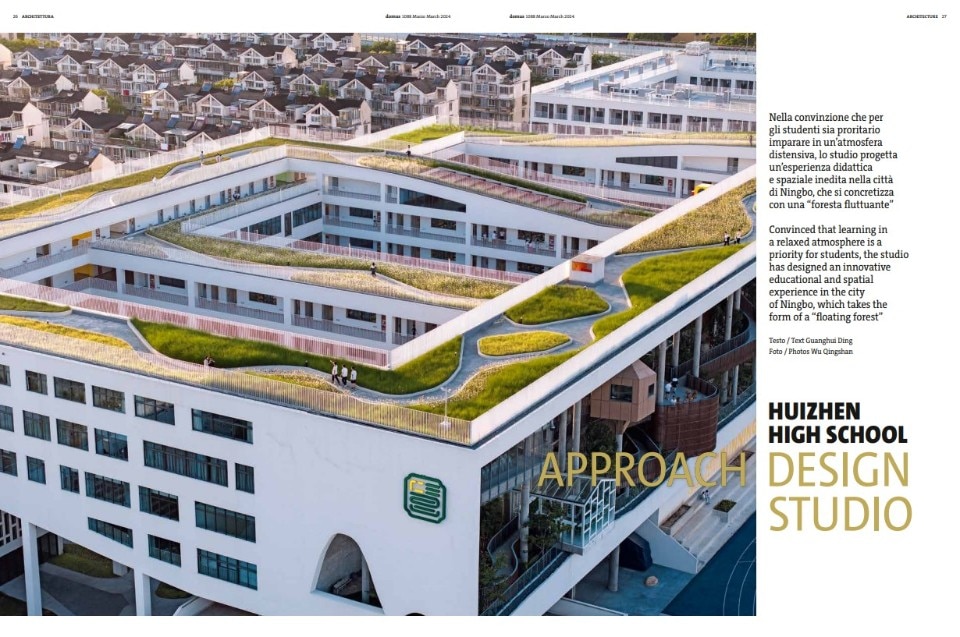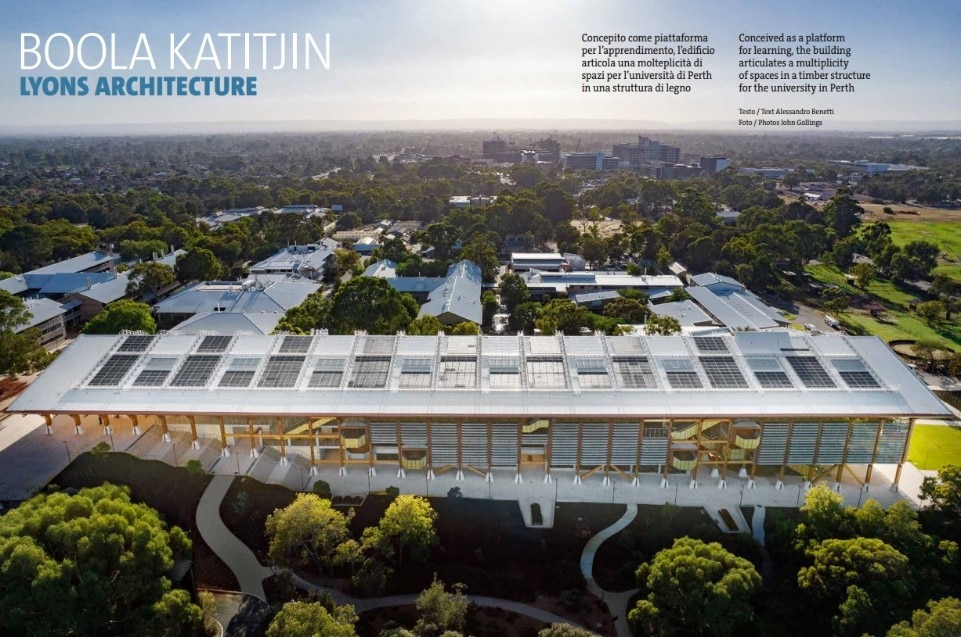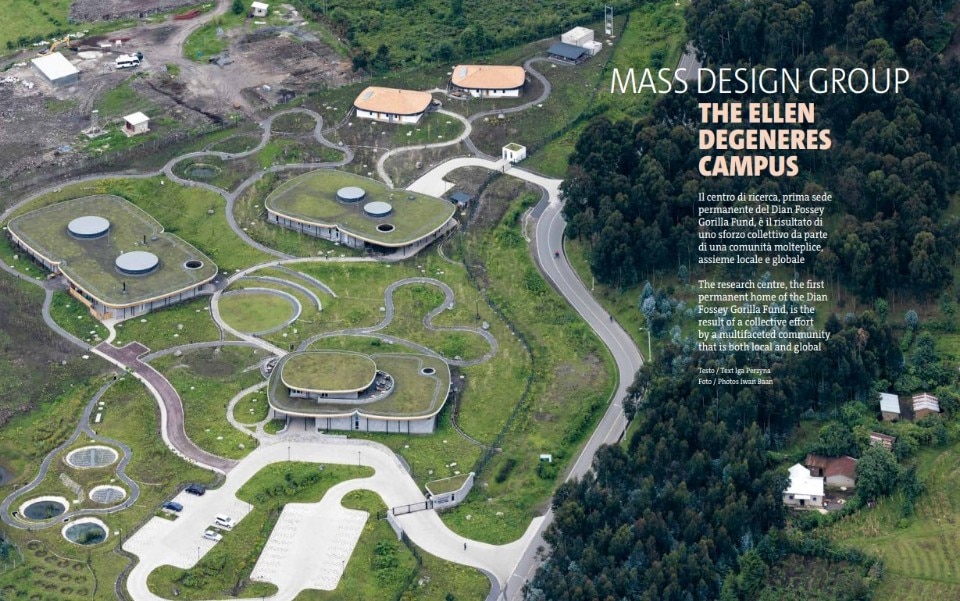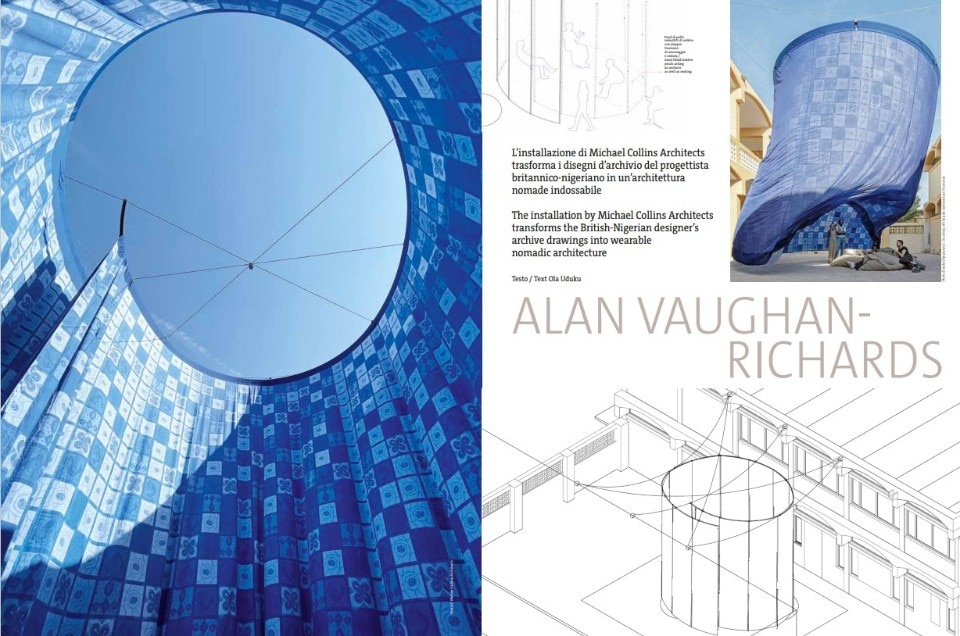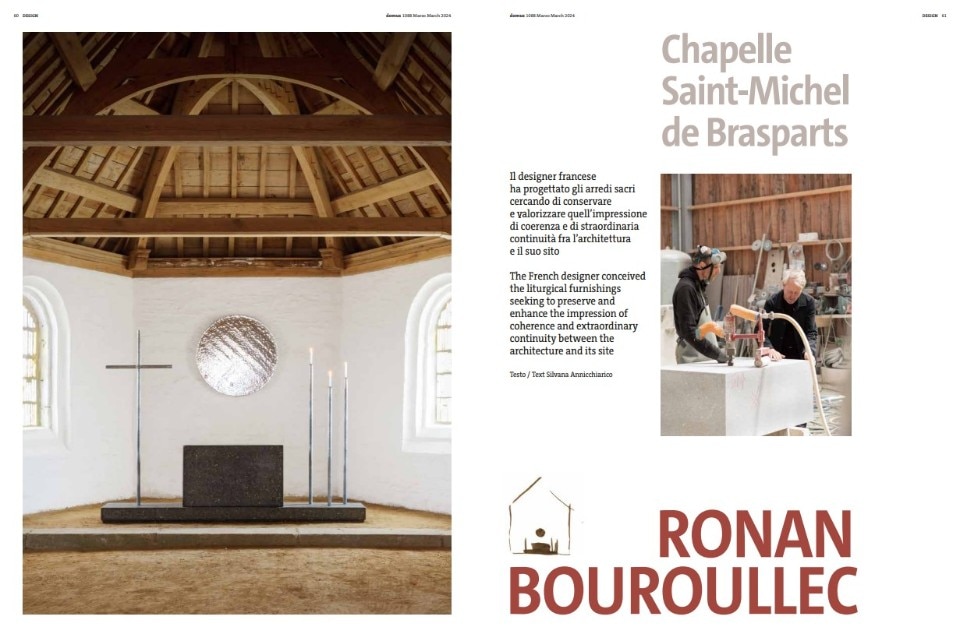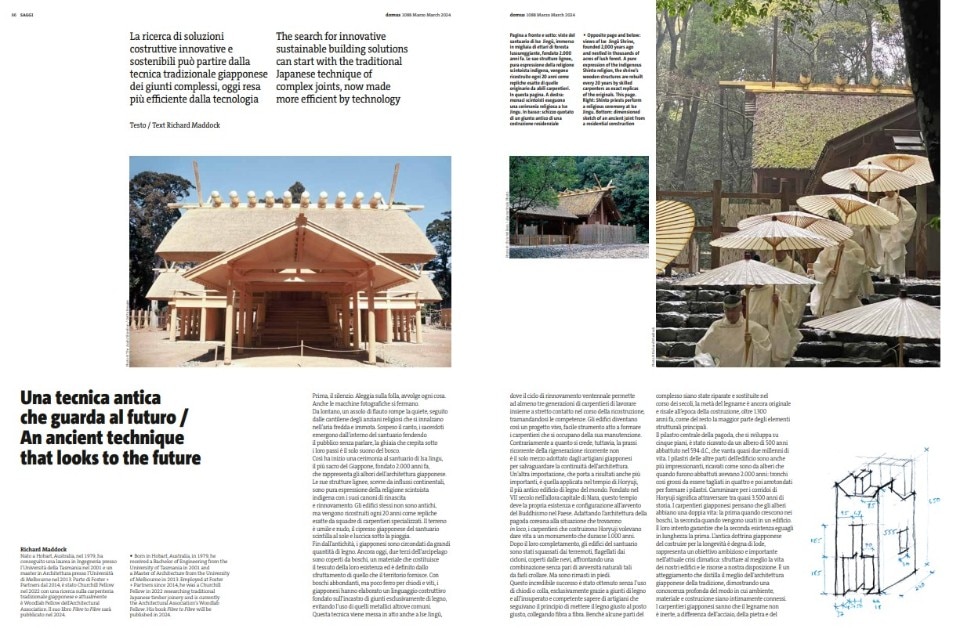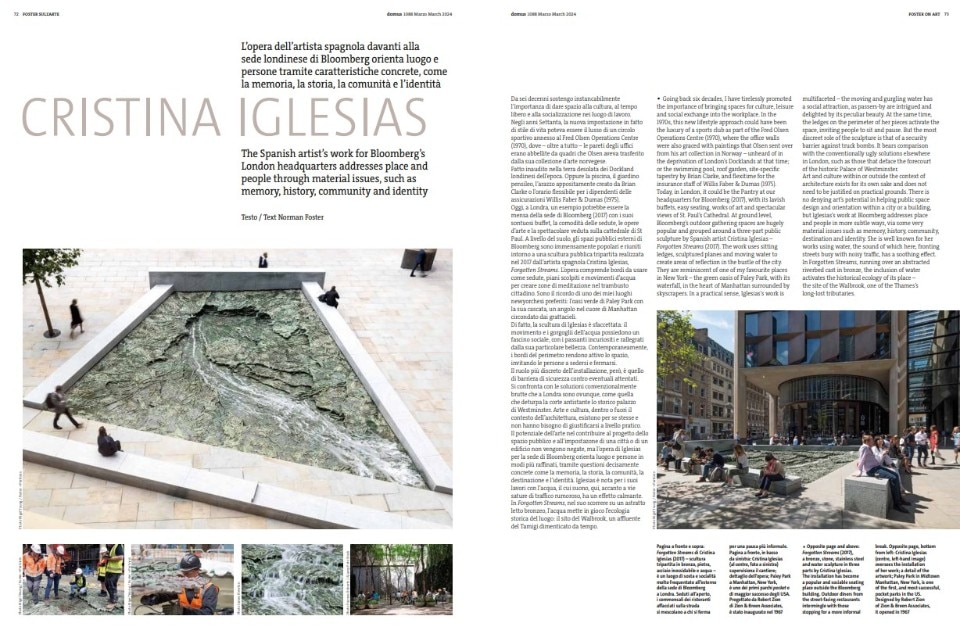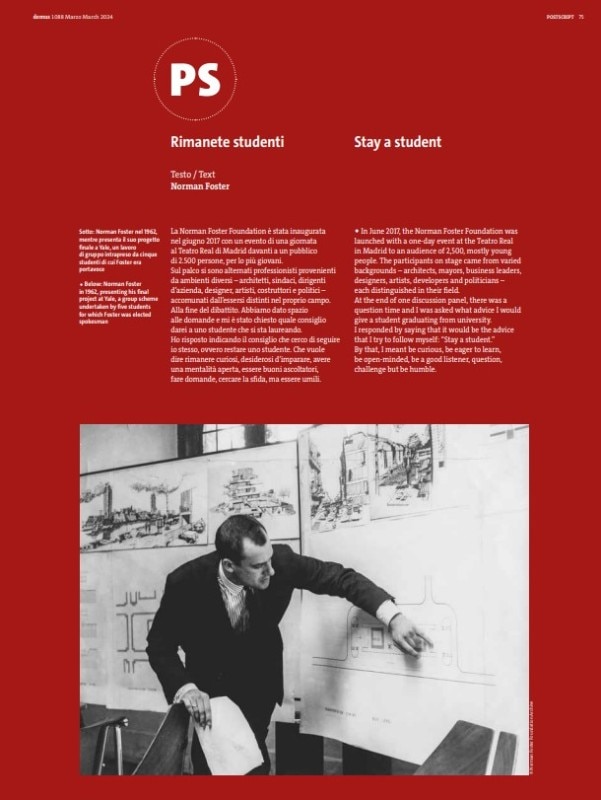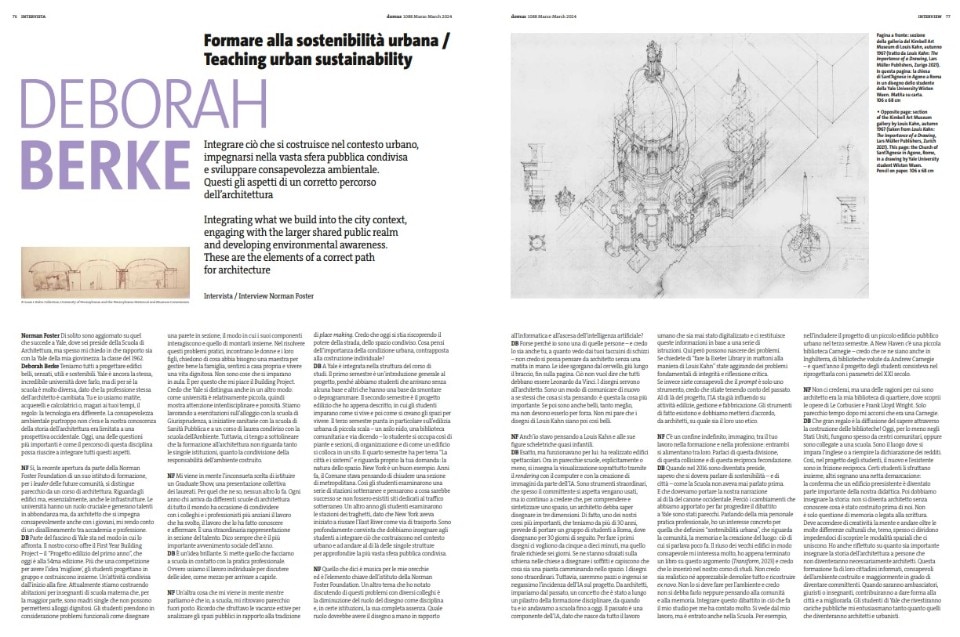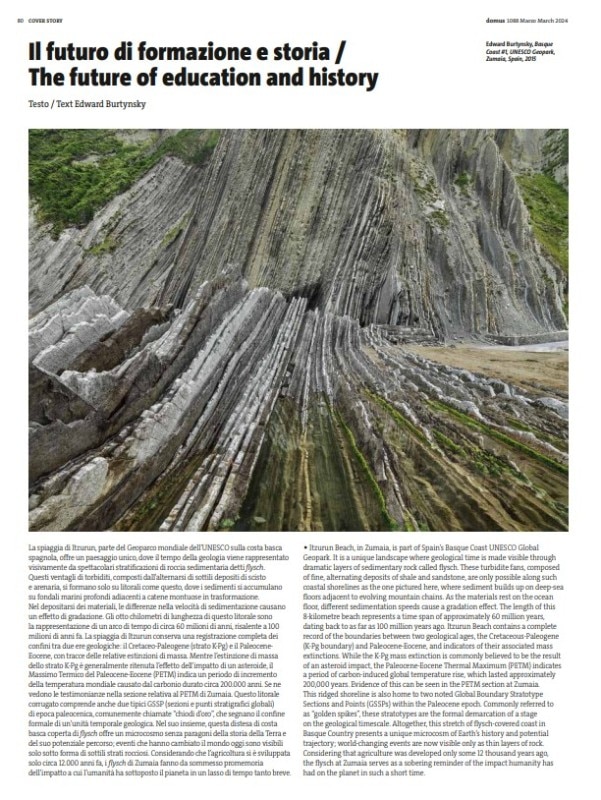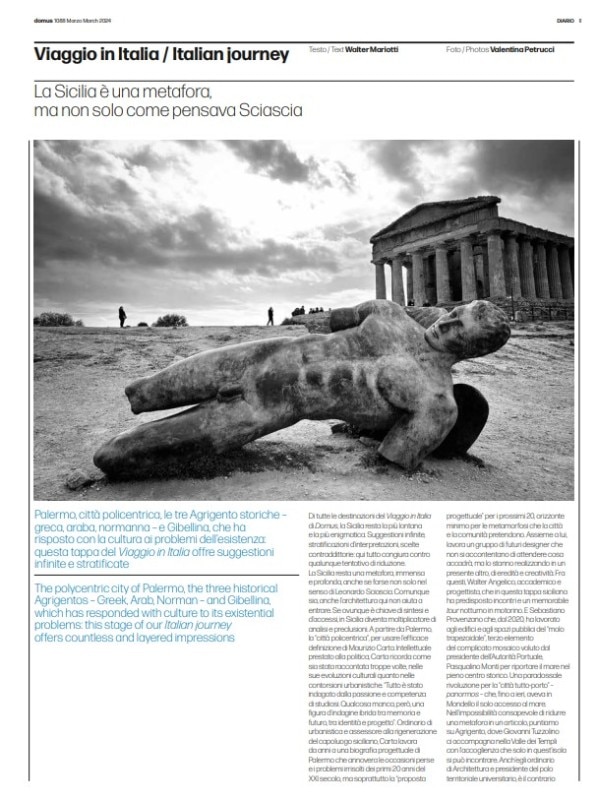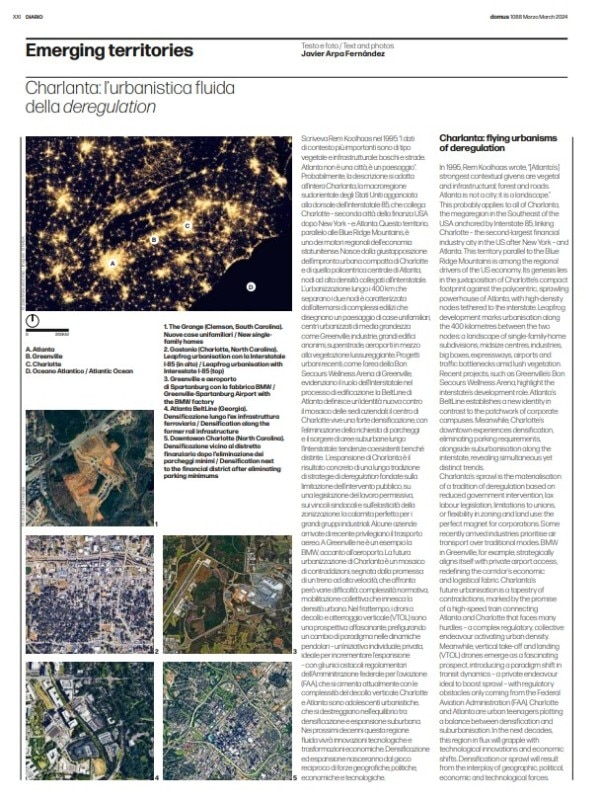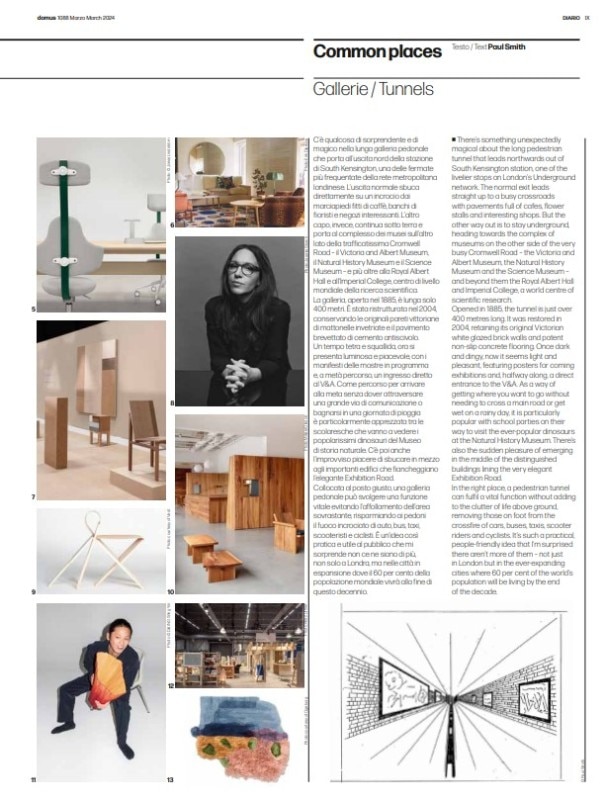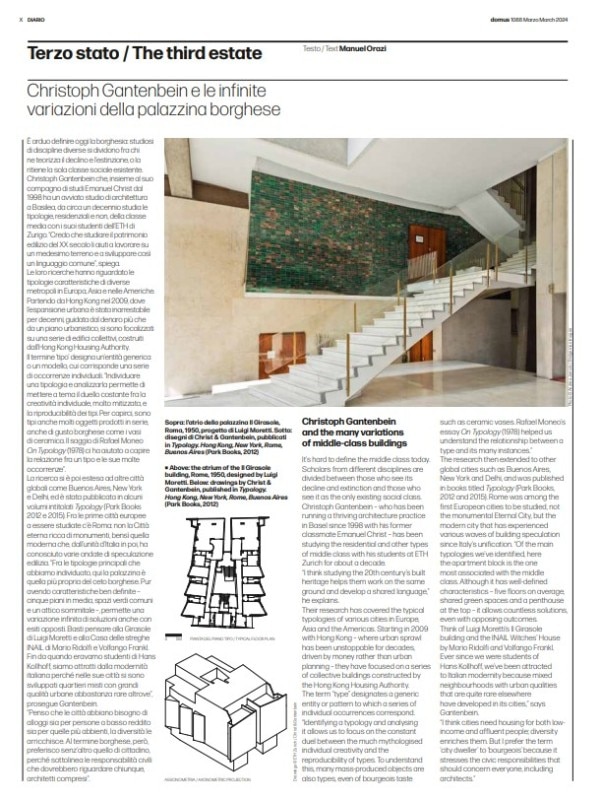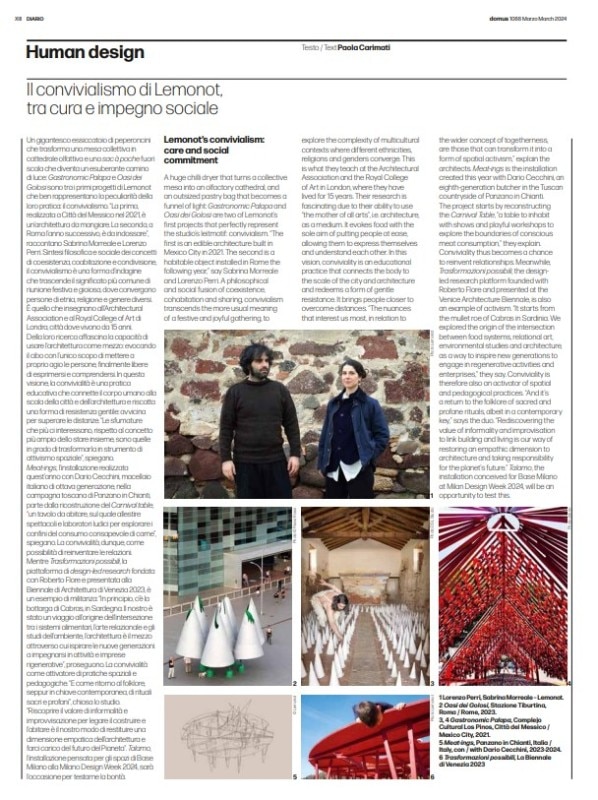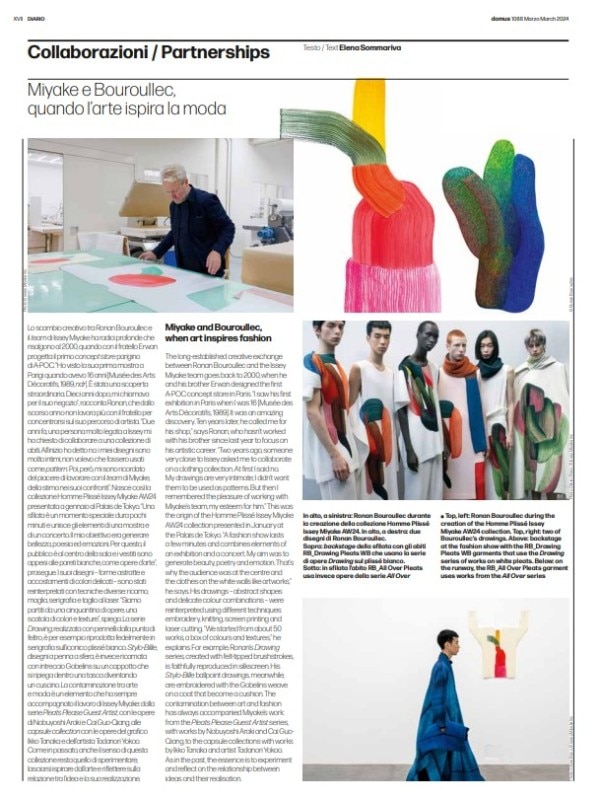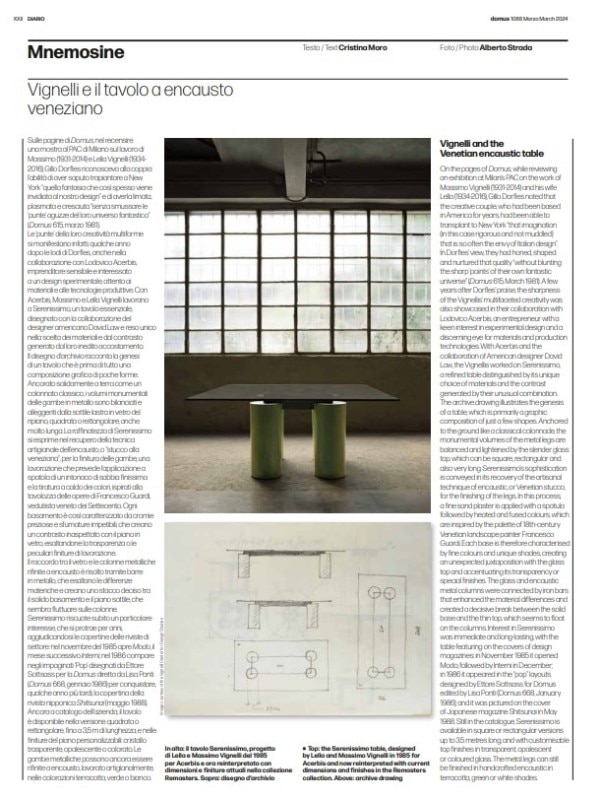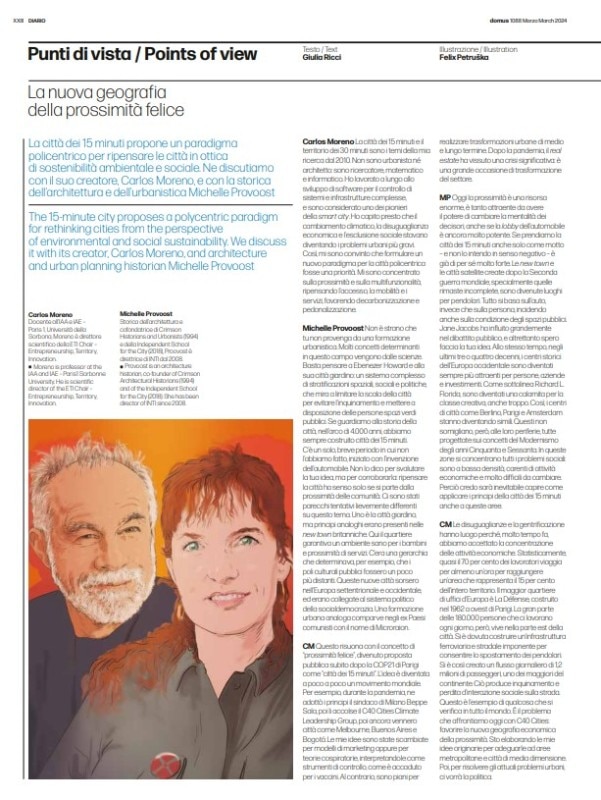"Cities are our future," writes Norman Foster in Domus 1088. However, cities are becoming incrementally more complex, posing unprecedented challenges, not only in terms of urban planning but also in the way designers and civic leaders are being trained. The relationship between public and private institutions has increasingly intensified, enough to create considerable portions of the urban settlements we live in. This calls for reflection on the responses that the design world is offering.
Focusing on the future of education and history, the issue opens with essays by Luis Fernández-Galiano and Matthew Foreman, architect and professor emeritus at the School of Architecture of Madrid (ETSAM – UPM) the former, and writer and researcher at Foster + Partners the latter. While Fernández-Galiano reflects on the state of architectural education, Foreman focuses on the history of the public-private relationship in the creation of major works, from Güell Park in Barcelona to Rockefeller Center in New York.
In the Archive section, Norman Foster talks about the meaning and the role design archives and architecture play in the education of new design professionals, delving into their peculiarities and need for preservation.
The architectural projects touch on the theme of this issue in different ways, gathering significant experiences at different latitudes of the globe. Erandi de Silva writes about the Busogo School in Rwanda and ASA Studio's innovative approach which, by proceeding in phases, puts community, environment, and functionality at the center, while Guanghui Ding recounts how Approach Design Studio's Huizhen High School represents the cutting edge of contemporary China's experimentation with school architecture. Alessandro Benetti analyzes the Boola Katitjin facility at Murdoch University in the Perth by Lyons Architecture, a structure that experiments with wood in an area that holds significant the heritage of the Indigenous peoples of Western Australia. MASS Design Group's Ellen DeGeneres Campus in Rwanda is an educational center for research on gorillas. Iga Perzyna portrays it as the product of the coming together of local and global communities in an unprecedented studio-defined implementation process. In Tanzania, Architectural Pioneering Consultants builds Simba Vision Montessori Campus and Franklin Kasumba writes about it, highlighting how the firm has capitalized on the resources of this remote area of the savannah.

In the Art section, Ola Uduku talks about Michael Collins Architects’s installation at Sharjah Architecture Triennial, a wearable nomadic archive dedicated to British-Nigerian architect Alan Vaughan-Richards’s work. Silvana Annicchiarico visited the Chapelle Saint-Michel de Brasparts in Brittany, where French designer Ronan Bouroullec designed a series of sacred furnishings in continuity with the surrounding architecture. Researcher and architect Richard Maddock focuses on wood and the history of Japanese joints, investigating the aspects that make this tradition a useful resource for the future.
In Foster on art, the British architect chooses the installation Forgotten Streams (2017) by Spanish Cristina Iglesias, a tripartite sculpture located outside Bloomberg's London headquarters. In Book reviews, Luca Galofaro reviews three books – one by Thomas Ramge and Rafael Laguna de la Vera; one edited by Beatriz Colomina, Ignacio G. Galán, Evangelos Kotsioris, and Anna-Maria Meister; and one by Amy Edmondson – that look at innovation, pedagogy, and the importance of failure. In Postscript, Foster urges us to stay a student, a thought sparked by a meeting with young participants at the Norman Foster Foundation presentation at the Teatro Real in Madrid.
Closing the issue is an interview with Deborah Berke, Dean and J.M. Hoppin Professor at the Yale School of Architecture, as well as founder of the TenBerke studio.Nella Cover story, il fotografo canadese Edward Burtynsky racconta la genesi della fotografia presentata sulla copertina. Si tratta di un dettaglio di una formazione rocciosa, una foto scattata sulla spiaggia di Itzurun, lungo la costa basca.
In Cover story, Canadian photographer Edward Burtynsky explains the origin of the photograph displayed on the cover. It is a detail of a rock formation, a photo taken on Itzurun beach on the Basque coast.
In the Diario section, in Italian journey, editorial director Walter Mariotti takes us to discover Sicily, from Palermo to Agrigento and Gibellina. In Emerging territories, Javier Arpa talks about Charlanta, the U.S. megaregion stretching between Charlotte and Atlanta. On the other hand, Paul Smith looks at the role of tunnels in London; Manuel Orazi interviews Christian Gantenbein in The third state while Paola Carimati meets with Lemonot in Human design; Elena Sommariva writes about the collaboration between Issey Miyake and Ronan Bouroullec; and Cristina Moro about the Serenissimo table (1985) by Lella and Massimo Vignelli, now reinterpreted in the Remasters collection by Acerbis.
In Points of view, Giulia Ricci meets the 15-minute city theorist Carlos Moreno and Michelle Provoost, architectural historian, co-founder of Crimson Historians and Urbanists and the Independent School for the City, as well as director of the International New Towns Institute. The conversation focuses on Moreno's polycentric paradigm for rethinking cities from the perspective of environmental and social sustainability.




